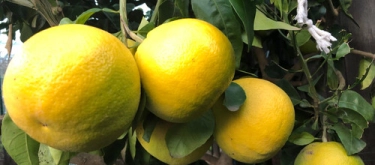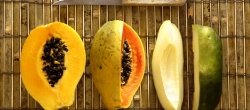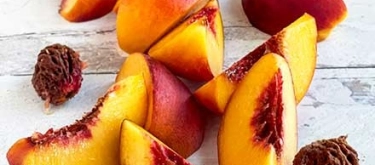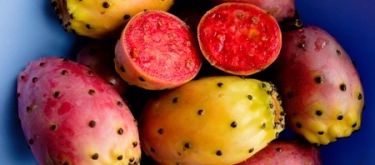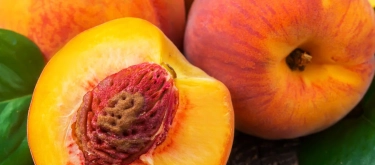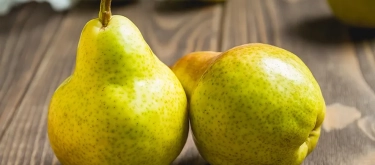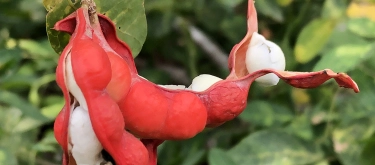Melon: Taste Profile, Aroma, Benefits and Health Risks
Melon (Cucumis melo) is a juicy, sweet, and refreshing fruit cherished worldwide for its luscious flavor and hydrating properties. Originating from Africa and Southwest Asia, melons are cultivated globally, thriving in warm, temperate climates. Their sweet taste, delicate aroma, and versatility make melons popular both fresh and in culinary applications—from fruit platters and salads to desserts and beverages—particularly during hot seasons, offering cooling refreshment and nutritional value.
Melon is suitable for vegetarians, vegans, and gluten-free diets. While melon allergies are uncommon, cross-reactivity (oral allergy syndrome) may occur in individuals sensitive to certain pollen. Additionally, melons' natural sugar content may impact individuals with diabetes, requiring moderate consumption.
What does Melon taste like?

Complete Sensory Description
Taste
Melons are renowned for their naturally sweet, delicate flavor characterized by a pleasing balance of sweetness and subtle fruity notes. The sweetness varies significantly by variety, ranging from mild and gently honeyed (cantaloupe, muskmelon) to intensely sugary and aromatic (honeydew, Galia melon). A subtle floral and tropical undertone often emerges, especially in ripe fruits. Mild acidity occasionally complements sweetness, enhancing melon’s overall refreshing quality and appealing taste.
Aroma
Melon fragrance is notably fresh, mildly sweet, and gently floral. Ripeness intensifies the aroma, producing enticing fragrances reminiscent of tropical fruit, honey, flowers, and subtle vegetal freshness. Cantaloupe and Galia varieties, in particular, develop pronounced, sweet, floral aromas when ripe, adding significantly to their culinary appeal.
Texture
Melons typically offer juicy, tender, succulent textures, ranging from meltingly soft to moderately firm, depending on variety and ripeness. Cantaloupe’s tender flesh melts smoothly in the mouth, while honeydew and watermelon are slightly firmer yet equally juicy, delivering refreshing hydration. The texture significantly influences culinary preference, enhancing fresh consumption, salads, or chilled preparations.
Appearance
Melons feature round or oval shapes with smooth or netted skin, varying widely from pale green (honeydew) and creamy beige (cantaloupe) to vibrant yellow or green-striped exteriors. Flesh colors also vary—orange in cantaloupe, pale green in honeydew, or white to pale yellow in other varieties—contributing visually appealing diversity to culinary presentations.
In-depth Flavor Analysis
The delicate sweetness of melons arises primarily from fructose, glucose, and sucrose, sugars present in varying proportions depending on melon type and ripeness. Cantaloupes and honeydew melons typically contain higher levels of sucrose and fructose, producing richer, more intense sweetness. Melons also contain modest levels of organic acids (predominantly malic and citric acid), providing subtle tartness to balance sweetness without diminishing flavor harmony.
Aromatic complexity in melons originates mainly from volatile compounds such as esters, aldehydes, alcohols, and terpenes. Ethyl esters (ethyl acetate, ethyl butanoate) and acetates (hexyl acetate) are crucial in providing the characteristic fruity, floral, and tropical notes. Muskmelons, like cantaloupe, contain particularly high concentrations of methyl and ethyl esters, resulting in their strong fruity and floral fragrance, intensifying with ripening.
Environmental factors, such as climate and soil, strongly affect melon's flavor. High temperatures during ripening concentrate sweetness, whereas cooler or less sunny climates produce fruits with lower sugar levels and less aromatic complexity.
Varieties and Culinary Applications
Cantaloupe (Muskmelon)
- Sweet, aromatic, juicy flesh with distinct floral notes; excellent fresh, in fruit salads, smoothies, desserts, or with savory pairings (prosciutto, cheese).
Honeydew Melon
- Mildly sweet, subtle honey flavor, refreshing texture; ideal fresh, in fruit salads, cold soups, smoothies, or combined with seafood and fresh cheeses.
Galia Melon
- Intensely aromatic, sweet flavor with delicate floral nuances; suitable for fresh consumption, desserts, sorbets, or fruit salads.
Canary Melon
- Sweet, mellow, mildly floral flavor with firm texture; enjoyed fresh or used creatively in salads or culinary garnishes.
Culinary Versatility
Melons enhance diverse dishes and preparations:
- Fresh consumption: Ideal in fruit salads, appetizers, or refreshing snacks.
- Desserts: Smoothies, sorbets, fruit salads, parfaits, and fruit-based desserts.
- Beverages: Melon juices, smoothies, cocktails, or flavored waters.
- Salads & Savory Pairings: Paired with cured meats (prosciutto), cheeses (feta, mozzarella), seafood, or herbs (mint, basil).
- Cold soups & gazpachos: Refreshing culinary preparations popular in Mediterranean cuisines.
Selection and Storage
Selecting Quality Melons
- Choose melons heavy for their size, with a fresh, sweet fragrance at the stem end.
- The skin should be intact without bruising, mold, or softness.
Storage Recommendations
- Store ripe melons refrigerated (4–8°C / 39–46°F) to maintain freshness, enjoying within 3–5 days.
- Ripen at room temperature, then refrigerate to preserve optimal sweetness and aroma.
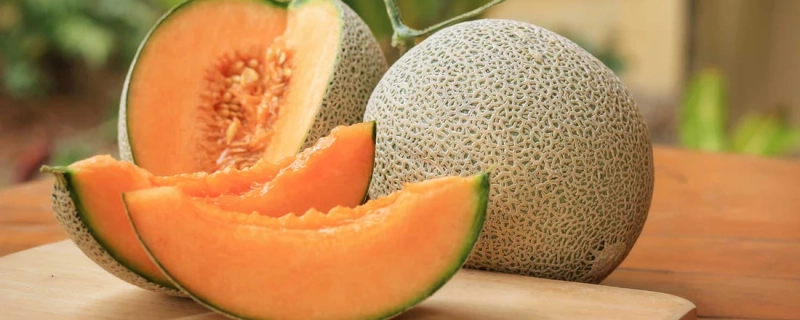
Nutritional Insights
-
Hydration & Low-Calorie:
High water content (about 90%) provides excellent hydration, making melons ideal for refreshing, nutritious, low-calorie snacks. -
Vitamin C & Antioxidants:
Excellent vitamin C source, supporting immune health, collagen synthesis, and protection from oxidative stress. -
Dietary Fiber & Potassium:
Rich dietary fiber supports digestion, cholesterol regulation, and gut health, while potassium content supports cardiovascular and electrolyte balance. -
Beta-Carotene (Cantaloupe):
Rich in beta-carotene (Vitamin A precursor), essential for vision health, immune function, and antioxidant protection.
Expert Insights & Culinary Tips
-
Flavor Pairings:
Melons pair exceptionally with mint, basil, honey, lime, citrus fruits, berries, ginger, cucumber, prosciutto, cheeses, and white wines (Moscato, Riesling). -
Enhancing Sweetness:
Serve melons slightly chilled to enhance sweetness perception, intensifying refreshment and aromatic appeal. -
Balancing Sweetness:
Balance melon sweetness with contrasting salty (cheeses, cured meats), acidic (lime, lemon), or spicy elements (chili, ginger) to enhance culinary interest and depth.
Interesting and Curious Facts
- Melons, historically treasured in ancient Egypt, Greece, and Rome, symbolized luxury, hospitality, and abundance, frequently depicted in art and ancient writings.
- The Japanese Yubari melon is among the world’s most expensive fruits, celebrated for exceptional sweetness, fragrance, and rarity.
- Melon seeds historically held symbolic significance, often used in medicinal preparations and traditional remedies, considered valuable nutrients in ancient medicine.
Harm and Dietary Considerations
-
Sugar Content:
High natural sugar content requires moderation for individuals managing blood sugar or diabetes. -
Gastrointestinal Sensitivity:
Large consumption may cause mild digestive discomfort or bloating, especially in sensitive individuals.
Religious Dietary Considerations
Melons are universally acceptable across all major religious dietary traditions:
- Islam: Permissible (Halal).
- Judaism: Permissible (Kosher, Parve).
- Hinduism & Buddhism: Widely permissible, commonly enjoyed during religious and festive occasions.
- Christianity & Other Religions: No known dietary restrictions.
Final Thoughts & Sensory Journey
Melons enchant with their refreshing sweetness, juicy tenderness, and aromatic complexity. Enjoyed fresh, paired with savory dishes, or transformed into delightful desserts, melons offer nutritious, delicious refreshment, embodying the essence of culinary pleasure and vitality.
Resources
- McGee, H. (2004). On Food and Cooking: The Science and Lore of the Kitchen. Scribner.
- USDA FoodData Central (2023). Melons Nutritional Profile and Storage Guidelines.
- Food and Agriculture Organization (FAO). (2021). Global Cultivation and Culinary Insights of Melons.


